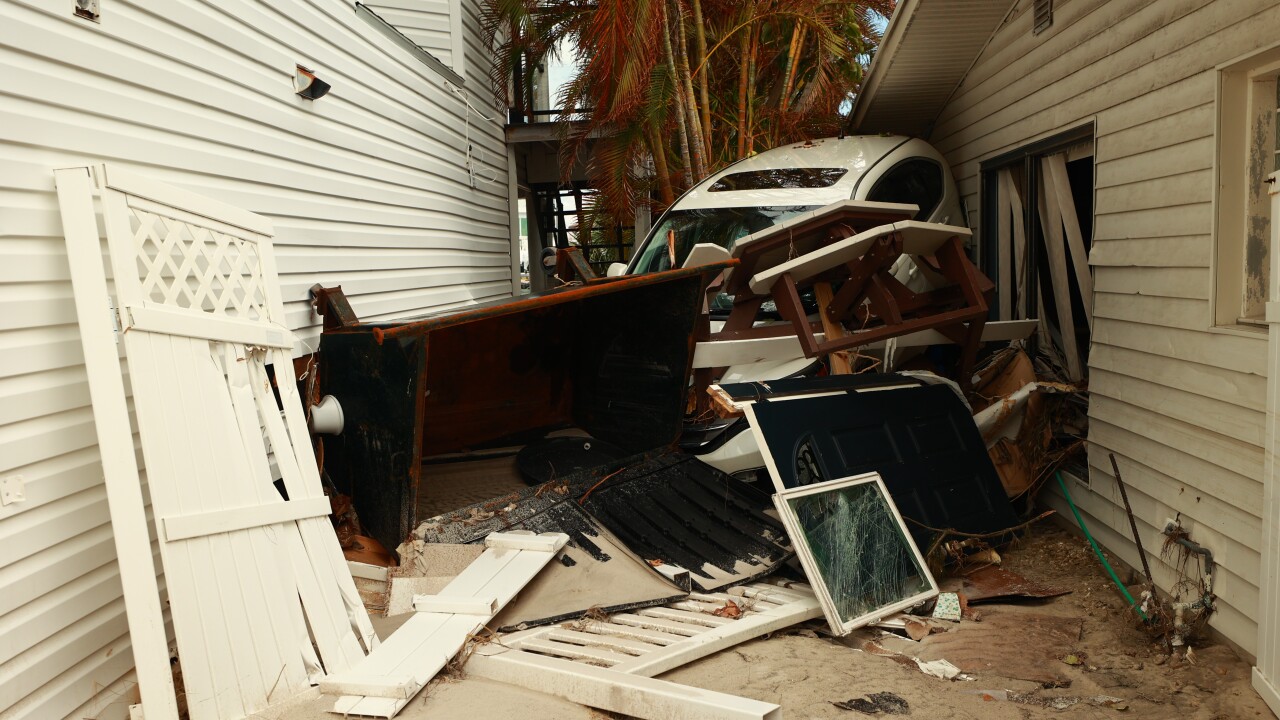PINELLAS COUNTY, Fla. — There is no easy way to interpret the federal guidelines regarding the FEMA 50% rule. But one thing looms heavy: Some homeowners may never return to repair their surge-damaged homes.
In hard-hit Treasure Island, the stench of dead fish fills the humid Florida air, following survivors every step to their damaged or destroyed homes. Survivors navigate the mountain of sand through the narrow path of what was once a road. Everyone is wondering what comes next.
"You try not to cry when you wake up, and you just keep on moving, trying not to show the tears," Kara Fesh told ABC Action News reporter Michael Paluska.
Fesh uses her bicycle to ferry supplies to friends on Sunset Beach. The road continues to be closed to local traffic as crews rush to restore utilities. But even once power and water are restored, Fesh knows it won't change what she believes is inevitable.
"Everything is changing on Treasure Island," Fesh said.
"What's your feeling about the future?" Paluska asked.
"Not going to be good here. I think in 2035, this is all going to be underwater," Fesh said.
Sea-level rise aside, the pressing issue for Hurricane Helene survivors right now is the FEMA 50% rule.
According to the FEMA fact sheet:
Individuals, communities, businesses and government agencies all have a stake in how buildings damaged from a disaster are rebuilt and repaired. Rebuilding after a disaster provides an opportunity to make buildings stronger and safer. The primary goal is to reduce risk of loss from future disasters.
If local officials determine that a residential structure has been substantially damaged – meaning the cost to repair the home is equal to or greater than 50 percent of its market value before the disaster damage – the owner generally has three options to bring the structure into compliance.
o Elevate the building to a height determined by local officials.
o Relocate the structure outside the floodplain.
o Demolish the structure.
"What's the future for Treasure Island and maybe even some other places?" Paluska asked longtime Treasure Island resident and realtor Bob Meyers.
"The biggest thing at this point is going to be probably the ability to rebuild and to fix, or to possibly fix, which is, pardon the expression, screwed up," Meyers said. "Because there's the 50% rule, as far as what you can build, what you can fix if your structure was damaged, more than 50% of the value of the structure, and then you have to go to the current FEMA heights to rebuild."
"What happens to them if they're damaged over 50%?" Paluska asked.
"Bulldozed… gone, gone. They can't repair it. They can't get permits to repair it."
There is also the possibility of a mass exodus of locals who can't afford the anguish of another flood or the financial burden of repairing or rebuilding. Meyers has been flooded three times in 13 months.
"Five feet of water in my garage," Meyers said.
"Are you rethinking maybe living here?" Paluska asked.
"Probably not, but it's getting a little old," Meyers said.
Meyers told Paluska he listed a property for sale on St. Pete Beach for $790K. The owners, he said, plan to "walk away" and get whatever they can from insurance selling the lot.
With all the fear in the community about FEMA or the city bulldozing homes at will, that isn't how things typically happen, according to experts we spoke to. There are ways to avoid triggering the 50% rule. Some options include doing the bare minimum repairs at first to make the home livable. Then, repairing damaged parts of the house over several years to stay within the home's value versus repairs. And you can shave off some money by repairing yourself.
The rule is in place to bring homes up to current code and elevate people out of the Special Flood Hazard Area. The goal is to lessen the number of homes flooded during devastating storm events and, in turn, save taxpayers money on FEMA assistance, etc. But leaving paradise for some is easier said than done.
The Town of Ft. Myers Beach released one of the best explainers for the 50% rule, which you can readhere.




